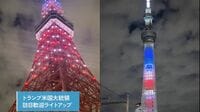By Linda Sieg and Elaine Lies
TOKYO (Reuters) - Japan on Friday executed the leader and six members of the Aum Shinrikyo doomsday cult that carried out a deadly sarin gas attack on the Tokyo subway in 1995, killing 13 people.
Japan is one of only two members of the Group of Seven advanced democracies to execute criminals. The United States is the other.
EXECUTION BY HANGING
Japanese death row inmates are executed by hanging. Three prison officers simultaneously press buttons to open the trap door so it is not clear which one is responsible.
Between 2012-2016, 24 people were executed, according to the most recent justice ministry data.
Unlike in the United States where execution dates are set in advance and made public, inmates in Japan are notified on the morning of their execution, usually about an hour before. The U.N. Committee against Torture has criticized Japan for “the psychological strain” on inmates and their families.
Only prison officials and a priest are present.
Hangings are announced afterwards. Since 2007 the justice ministry has released the names and crimes of those executed.
The seven executed on Friday at several facilities around Japan was the largest number executed at one time since 1998, when the justice ministry started releasing information on executions, Justice Minister Yoko Kamikawa told a news conference.
APPEALS
Those sentenced to death can appeal up to the Supreme Court. The multiple AUM-related trials lasted more than 20 years.
Convicted inmates can seek a retrial even after a Supreme Court ruling, but this does not guarantee a stay of execution. Several of those executed on Friday may have had requests for retrials pending, Amnesty International said.
The law says an execution must take place within six months of the sentence being finalised by the courts, but in practice it usually takes several years. The justice minister decides the timing.
PUBLIC SUPPORT
A 2015 government survey found that 80.3 percent of people supported the death penalty. That compares with 54 percent in the United States.
"I believe imposing a death penalty on those whose crimes are extremely grave and atrocious is inevitable," Kamimawa, the justice minister, said on Friday.
Anti-death penalty activists say a lack of information and increased interest in victims' rights are partly behind the support.
In 2010, then-justice minister Keiko Chiba, who opposed the death penalty, signed off on two executions and opened an execution chamber to media for the first time, hoping to stimulate debate.
In 2016, a lawyers' group called for the abolition of the death penalty by 2020, citing the possibility of wrongful convictions and international trends against capital punishment.
(Reporting by Linda Sieg and Elaine Lies; Editing by Robert Birsel)



